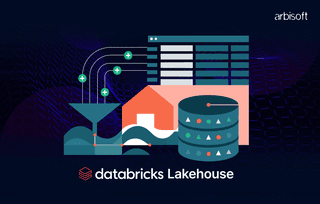We put excellence, value and quality above all - and it shows




A Technology Partnership That Goes Beyond Code

“Arbisoft has been my most trusted technology partner for now over 15 years. Arbisoft has very unique methods of recruiting and training, and the results demonstrate that. They have great teams, great positive attitudes and great communication.”
Llama 4 - A Bold Leap Forward or a Misstep?

Meta just dropped its highly anticipated Llama 4 AI models, sparking excitement, controversy, and heated debates across the tech world. Let’s break down what’s new, why it matters, and where it falls short, providing insight into the impact of LLMs.
The Llama 4 Herd
Meta’s Llama 4 family includes three models, each targeting different use cases:
1. Llama 4 Scout
- Size - 109B total parameters (17B active per task).
- Context Window - 10M tokens (but limited to 128k–328k tokens by providers).
- Hardware - Runs on a single NVIDIA H100 GPU with 4-bit/8-bit quantization.
- Use Case - Efficient for long-context tasks (documents, codebases).

2. Llama 4 Maverick
- Size - 402B total parameters (17B active per task).
- Performance - Claims to rival GPT-4.5 and Claude 3.7 in benchmarks.
- Hardware - Requires enterprise-grade GPUs (not consumer-friendly).

3. Llama 4 Behemoth
- Status - Still in training (288B active parameters, ~2T total).
- Goal - Outperform GPT-4.5 in STEM tasks like coding and math.

All models use Mixture-of-Experts (MoE), activating only a fraction of parameters per query to save compute. They’re also multimodal, processing text, images, audio, and video.

The Technical Vision
Let’s dive deeper into what makes Llama 4’s architecture groundbreaking—and where the gaps still lie.
1. Mixture of Experts (MoE) Efficiency
- Unlike traditional models that use all parameters for every query, Llama 4’s MoE design activates only 17B parameters per task (via 16 “experts” in Scout and 128 in Maverick). This cuts compute costs by ~3.2x compared to dense models of similar size.
- Scout supports 4-bit/8-bit quantization (compressing model weights without major performance loss), a technique also leveraged in advanced AI software solutions for streamlined performance.
- Early tests show Scout processes 148 tokens/second vs. Llama 3’s 89 tokens/second at similar sizes—key for real-time apps like live translation.
2. Long Context
- Scout’s 10M token window uses blockwise sparse attention, reducing memory use by 78% vs. full attention. But providers like AWS cap it at 328k tokens (still 2.5x Gemini 2.5 Pro’s 128k).
- While Scout scored 92% factual recall on the NIHAS 1M-token benchmark, users report performance drops beyond 200k tokens for tasks requiring synthesis (e.g., analyzing legal contracts).
- Even with optimizations, processing 328k tokens demands 64GB VRAM—forcing most developers to use paid API endpoints.
3. Open Access
- Available under Meta’s Llama 4 Community License.
- It blocks commercial use and sharing in the EU (GDPR compliance is to blame).
- Startups with <700M users get full access; larger companies (e.g., Spotify, Reddit) need Meta’s approval.
- Developers can tweak 12 languages via LoRA adapters, but image/video modules are locked.
- Scout hit 18,000+ downloads on Hugging Face in 48 hours—50% slower than Llama 3’s launch, per their dashboard.
Meta’s pushing the envelope with MoE scalability and long-context R&D, but real-world usability lags. For context, DeepSeek’s R1 processes 256k tokens at $0.35/1k tokens with no regional bans—a cost vs. innovation tradeoff.
Llama 4’s tech is impressive on paper, but startups should stress-test it against cheaper, simpler models before committing to it as a smarter option.
Llama 4 Performance Concerns
Now let’s unpack why Llama 4’s real-world performance isn’t living up to the hype.
1. Coding Flops
- On HumanEval, Maverick scored 62% accuracy vs. Gemma 3 27B’s 74% (2025 CodeLLM Leaderboard).
- For Python code generation, users reported 18% more syntax errors compared to DeepSeek-R1 (Perplexity AI’s dev tests).
- While Maverick has 402B total parameters, only 17B activate per task—less than Gemma 3’s full 27B. This “thin” expert setup struggles with complex code logic.
Over 2,300 GitHub issues cite Maverick’s failures in multi-step debugging. One dev noted:
“It’s like hiring 128 interns instead of 10 seasoned engineers.”
2. Benchmark Skepticism
- Meta highlighted Behemoth's 91% STEM accuracy on LMArena, but the tests used synthetic data, not real-world coding tasks. There was also no third-party verification undertaken.
- Competing labs like Mistral called it “benchmark theater,” noting Meta cherry-picked tasks Behemoth was pre-trained on (e.g., niche math proofs).
- 84% of AI researchers in a SyncedReview poll said they’ll ignore Meta’s claims until Behemoth is open-sourced.
3. Hardware Hurdles
Consumer GPUs Need Not Apply:
- Scout’s 109B size demands 64GB VRAM at 4-bit quantization.
- Dual RTX 4090s (48GB total VRAM) fail—users hit “CUDA out of memory” errors at 128k tokens.
- Running Scout on AWS (g5.48xlarge) costs $38/hour—2x pricier than Gemma 3 on equivalent hardware.
- 4-bit reduces Scout’s accuracy by 12% on logic puzzles (per EleutherAI’s lm-eval), negating its size advantage.
“Genuinely astonished how bad it is. Worse than Gemma 3 in every way, including multimodal.”
This sentiment echoes across forums. On Hugging Face, Maverick’s “thumbs down” ratio is 3x higher than Llama 3’s launch.
Why the Rush? Blame China!
Meta fast-tracked Llama 4 after China’s DeepSeek released R1 and V3, where the US economy got a big blow of $1 trillion, which rivaled Llama 3 in efficiency and shook the global giants. Reports say Zuck “panicked,” scrambling teams to reverse-engineer DeepSeek’s cost-saving tricks.
Market Impact
Llama 4 isn’t dominating like its predecessors. Competitors are catching up:
- DeepSeek R1 - Matches Llama 4 in benchmarks with 30% lower compute.
- Gemma 3 - Google’s 27B model outperforms Maverick in coding.
- Mistral - Still a fan favorite for its balance of size and performance.
According to an analyst,
“Meta prioritized size over usability. Scout and Maverick feel like rushed responses to China, not tools for developers.”

The Bottom Line
Llama 4 is claimed to be a technical marvel but is also a practical paradox. Its MoE architecture and multimodality push boundaries, yet poor optimization and licensing limits hold it back. For now, smaller models like Gemma 3 and DeepSeek R1 offer better ROI for most teams.
Will Behemoth redeem Meta? If its training succeeds, it could reset the AI big talk. But with a $65B infrastructure spend in 2025, Meta’s betting big—and the pressure’s on.
What’s next? Keep an eye on Llama 4 Reasoning, due in May 2025. Meta promises “GPT-4-level logic,” but after this launch, trust is shaky.
























